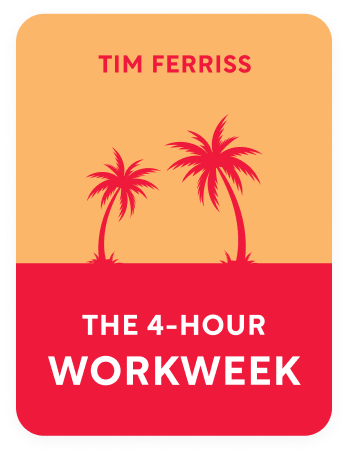

This article is an excerpt from the Shortform book guide to "The 4-Hour Workweek" by Tim Ferriss. Shortform has the world's best summaries and analyses of books you should be reading.
Like this article? Sign up for a free trial here .
What is the Pareto Principle? How can you use the Pareto Principle to be more efficient?
The Pareto Principle, or the Pareto 80/20 rule, says that you get 80% of the results using 20% of the effort. In his book, Tim Ferriss argues that you can use this principle to make yourself more efficient and spend less time working.
Keep reading to find out how you can use The Pareto Principle.
The Pareto Principle and the 80/20 Rule
Italian economist Pareto discovered that, generally, 80% of results are generated by 20% of the effort. (In some cases the ratio can skew even further to up to 99/1.) This rule applies both positively and negatively. For example, the top 20% of your friends probably generate 80% of your social happiness. Your bottom 20% probably generate 80% of your problems. Therefore, you can use this rule to both win yourself time and decrease your problems:
- Make a to-do list of the 20% of important things in your life that create results or happiness. (If you don’t know what the most important 20% of your activities are, pay attention to each of your actions for a month or two to determine which create the most results.)
- Make a don’t-do list of the 20% of unimportant things that waste time or make you miserable.
For example, when the author learned about the 80/20 rule, he evaluated his company BrainQUICKEN LLC. Five out of his 120 customers generated 95% of his revenue and they always ordered regularly and professionally. The other 115 customers that generated only 5% of his revenue also generated nearly all his problems.
Realizing this, Ferriss immediately stopped approaching most of his unproductive customers. If they ordered, he’d fill the order, but he wouldn’t contact them. There were two rude companies who did contribute enough to his revenue to be mathematically worth pursuing, but they weren’t worth the toll on his mental health. He contacted both of them to say that if they couldn’t be polite, he wouldn’t serve them anymore. He didn’t really need their money; he just thought he did because workforce conventions told him so. One customer left, and the other changed its behavior.
Finally, Ferriss studied his top five customers and used the commonalities between them to find other, similar customers. He ended up with eight top customers that ordered regularly without him needing to intervene. His income went up and his hours went down. This is one example of how the Pareto Principle, or the Pareto 80/20 rule.

———End of Preview———
Like what you just read? Read the rest of the world's best book summary and analysis of Tim Ferriss's "The 4-Hour Workweek" at Shortform .
Here's what you'll find in our full The 4-Hour Workweek summary :
- The 4-step process to live a "retired" lifestyle now
- Find out if you're wasting the best years of your life working a 9-5
- How to create a business that makes you money without sucking up your time






